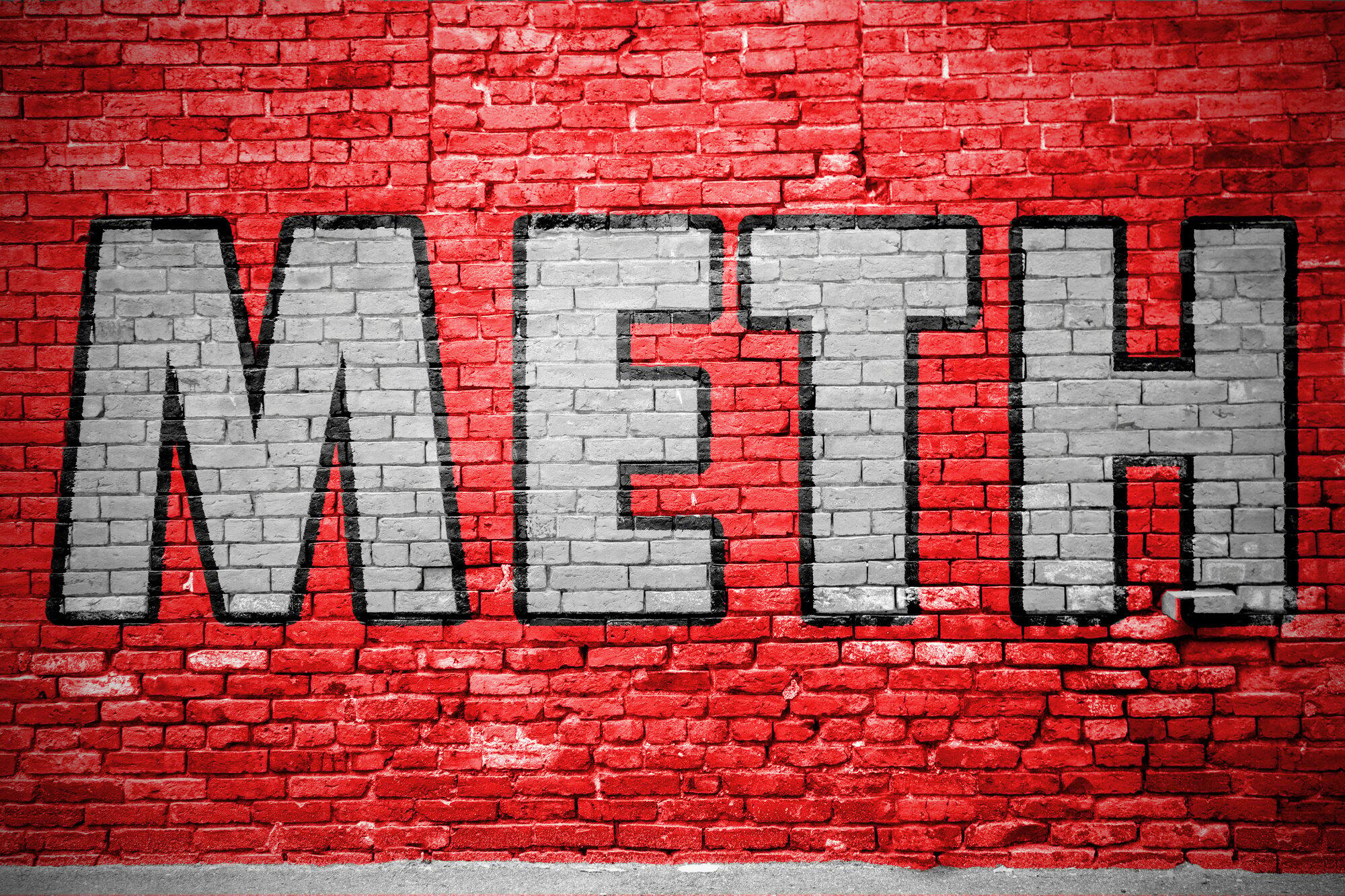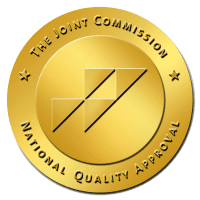Methamphetamine (meth) use in the United States is on the rise, as well as ongoing challenges with overdose deaths and getting people into treatment programs.
Part of these challenges involve navigating through withdrawal symptoms and what that makes treatment look like. If you or a loved one has been using meth long-term, the prospect of stopping can be downright scary. Learning more about meth withdrawal symptoms and what you can expect will help take the fear out of the withdrawal period.
Read on to learn everything you need to know about meth, meth withdrawal symptoms, and your treatment options.
Overview of Meth
Meth is a highly addictive stimulant that impacts your central nervous system. Meth has been around since the early 20th century, initially developed from amphetamines used as inhalers and decongestants.
Since meth is a stimulant, it leads to a rush of pleasurable feelings after use. This led to meth being listed as a controlled substance in the United States.
Meth can be snorted, smoked, or taken by mouth. It’s also commonly cut with other opioids like fentanyl, making it even more dangerous. It can also be cut with additives like baking soda and sugar to increase profits.
Crystal meth is a glass-like substance that’s typically smoked in a pipe, but you can also inject or snort it.
Meth and the Brain
Meth gives an initial rush of euphoria by impacting the dopamine receptors in the brain. Dopamine is a type of neurotransmitter, mostly known as the “feel-good chemical,” which is heavily involved in the reward and motivation centers of the brain.
It gives positive and pleasurable feelings. When you take a stimulant like meth, it causes a rush of dopamine, leading to feelings of a euphoric high. People continue to chase this high, but it takes more and more meth to achieve the initial euphoric feelings. Ultimately, this is why it’s so easy to become addicted to meth.
Factors That Impact Meth Withdrawal
Now that you know more about meth and how it affects your body, it’s time to move on to the withdrawal symptoms you’ll experience when you stop using.
When you take a drug long-term, your body becomes used to the effects and depends on it to function normally. This is also the case with meth and how it impacts the brain. Once you stop using meth, your brain and body have to adapt quickly to not having a stimulant on board.
The first thing to remember is withdrawal symptoms will vary for each person. The severity of the symptoms you’ll experience depends on the length, frequency, and quantity of your meth use.
You also have to consider other factors like how you use meth. For example, people who inject meth usually experience more intense withdrawal symptoms than someone with a different method of taking it.
In addition, the purity of meth you use can also play a role. Obviously, stronger and more pure meth will lead to more intense withdrawal symptoms.
You also have to take into consideration the factors that impact how long meth stays in your system. These factors include your overall health, age, weight, and metabolism.
Meth Withdrawal Symptoms
Typically, meth withdrawal symptoms begin within the first 24 hours after you stop using. You can expect different phases of meth withdrawal symptoms that begin with:
- Anxiety
- Irritability
- Fatigue
- Dehydration
- Low energy
- Chills
- Drug cravings
- Trouble sleeping
- Withdrawing from other people
- Dysphoria or low mood
- Depression
- Psychosis
- Abdominal cramping
In most cases, depression, meth cravings, and food cravings will be at their most intense 24 hours after your last use. Many people also experience abdominal cramping and a severe decline in energy within the first 48 hours after the last use.
Other withdrawal symptoms include muscle spasms, hallucinations, paranoia, dehydration and not eating enough. Usually, these symptoms linger after the first 48 hours but can last for two weeks.
Meth Withdrawal Timeline
Now that you understand more about withdrawal symptoms, let’s take a look at the meth detox timeline. The main phases you can expect include:
Initial Phase
The first phase of meth withdrawal is known as the “crash phase.” This is due to the crash that occurs when you first stop using the drug since you’re no longer getting that euphoric rush. This impacts your dopamine levels and leads to feelings of low mood and even depression.
You can also experience a decline in cognitive function, making it challenging to complete tasks that require a lot of problem-solving and memory.
Most of the time this initial phase lasts between seven to ten days, and during this phase, drug and food cravings slowly begin to ease off.
Subacute Phase
The subacute phase can last up to three weeks. It begins after the second week of your last use, and you’ll find many of the intense symptoms like cravings start to subside.
However, many people will continue to feel anxiety, depression, and fatigue during this phase, which can last up to 20 days.
Although discontinuation of meth can often reverse stress-induced balding, meth and hair loss have been correlated in some studies. Quitting meth will be the foundation for hair regrowth, however.
Long-Term Withdrawal
After the first month, you’ll typically stop experiencing severe withdrawal symptoms. Also, any lingering withdrawal symptoms will start to fade after the first month.
On the other hand, psychological symptoms like anxiety and depression can continue for a few months or more. Some people also continue to experience intense cravings for many months.
Learning to deal with these cravings by making specific lifestyle changes is key to minimizing these symptoms and recovering long-term.
Meth Addiction Treatment
Meth addiction treatment will help you manage withdrawal symptoms and move on to the other stages of recovery.
You’ll need to start with a medical detox program. This is because you still have meth in your body. Getting rid of all substances will help you build a solid foundation for the next stages of your life.
You’ll need to go through a medical detox program to receive medication and other forms of assistance.
Medical Detox
Medical detox is a process that helps you safely withdraw from drugs or alcohol. Stopping on your own can lead to uncomfortable and unpleasant symptoms which can also put your health at risk.
Not only that but since quitting leads to cravings, you’re much more likely to start using meth again if you don’t have the support you need.
When you first enter meth detox, you’ll have a complete evaluation. This involves both your physical and mental health. Staff will assess how long you’ve been using it and your current withdrawal symptoms. From here, they’ll form a custom treatment plan to help you detox safely and as comfortably as possible.
Your treatment plan will include medications to help manage your symptoms and you’ll start to prepare for the next phase of treatment.
Inpatient Rehab
Your next step is to start a treatment program like inpatient rehab, which offers you the highest level of addiction treatment.
Programs usually last between 30 and 90 days, and you’ll live at the facility during treatment, taking you out of your usual environment. You’ll participate in individual and group therapy sessions that aim to address the harmful behaviors and thoughts that lead to addiction.
Many people with substance use disorders have co-occurring mental health disorders like anxiety and depression. This connection occurs together since some people use substances as a form of self-medication. In addition, certain substances can cause people to experience symptoms of mental health disorders,
For this reason, treatment programs include individual and group behavioral therapy to address these behaviors. Cognitive behavioral therapy (CBT) is an effective talk therapy that helps you recognize and address these negative thinking patterns.
Other therapies include:
- Medication management
- Family therapy
- Relapse prevention
- Mindfulness
- Meditation
- Yoga
- Nutritional counseling
- Life and work skills
All of these therapies help you to continue to manage any ongoing withdrawal symptoms and learn how to manage living sober.
Partial Hospitalization Treatment (PHP)
PHP, also referred to as “day treatment,” offers a high level of care, but allows you to live at home during treatment.
You’ll attend treatment four to six hours daily for at least five days a week. PHP continues with behavioral therapies and relapse prevention.
PHP programs are best for people who have just completed an inpatient rehab program and still need an intensive treatment program to help them continue to adjust.
Intensive Outpatient (IOP)
IOP is the least intensive of all programs and is best for people who’ve completed an inpatient or PHP program. IOPs require you to attend treatment for nine hours or more weekly, with flexible days.
You’ll have more time to work and focus on family and home life. You’ll get the chance to learn to live in sobriety while still attending therapies and getting the support you need.
Start a Meth Rehab Program at Purpose Today
Remember, while meth withdrawal symptoms can become intense, finding a treatment program will help you get to the next steps in your recovery.
Purpose Healing Center is a leading substance abuse treatment center in Arizona and can provide you with individualized treatment to help you recover from addiction and stay sober.
Our programs involve dual diagnosis treatment for mental health disorders as well as a holistic approach that treats all aspects of you as a person. Specific programs include detox, inpatient rehab, partial hospitalization, and intensive outpatient programs.
Make sure to contact us today to learn more about our treatment programs and get started on your new journey.



